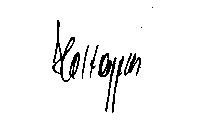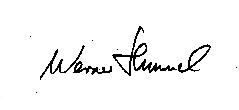The Conclusions drawn by this Group of Experts in May 2000 and presented in Chapter 43 of its Report stand. No amendment or alteration is necessary.
In this Update we have shown that in the course of the past six years - and in particular after the disclosure of Lennart Henriksson in November 2004 - the attitude of the Governments in Sweden and Estonia seemed to have changed to more openness and transparency whilst in Finland taciturnity remained to be the dominant attitude, when it came to the foundering of the ESTONIA.
Nevertheless some of the evidence, which has been established and reported by this Group of Experts many years ago was finally accepted officially in the societies of Sweden, Finland and Estonia at its actual value.
This refers for example to the video footage produced by the Finnish ROV on 02.10.94, i.e. 4 days after the sinking. Here one can see – as we have pointed out repeatedly – that the rails of bow ramp were cut-off and that the preventer wires were detached from the bow ramp. Since the rails and preventer wires had been attached to the bow ramp upon departure of the vessel from Tallinn and as both are not accessible at sea, they must have been cut off respectively detached after the sinking and before 02.10.94 by divers. We have brought this conclusion to the attention of the JAIC, the Governments, the media and the public in our Report, during the AgnEf Seminar and elsewhere – as did the Independent Fact Group – the only ones who picked it up after 5 years were the Swedish Parliament member Lars Ångström and the Estonian prosecutor Margus Kurm. Ångström presented it to the entire Parliament and to Transportminister Mona Sahlin, whilst in Estonia it became part of the Kurm Report.
There is, however, other evidence which still waits to be acknowledged at its value and importance such as the orange cube at the portside bow ramp coaming, which was years ago identified by different experts to be an explosive charge. It had not been there on 02.10.94, but it is clearly visible on the videos of 09.10.94. No doubt it must have been placed there during the days between the 2 and 9 October 1994 by divers. Considering the damages at the starboard side created by an explosion what other conclusion can be drawn from this fact, but that this explosive charge failed to detonate, when the one at the other side of the vessel did ?
There must also have been other activities around and at the wreck between May 1996 to August 2000 as the videos of the Rabe/Bemis divers show. Since the Swedish Government curtailed the order of investigation given to the National Laboratory of Forensic Science to the timespan from 02.10.94 – 06.12.94 these activities will not be further investigated yet.
On the other hand the evidence indicating the existence of a large hole in the starboard hull at the forepart of the cardeck has been confirmed by the scientific evaluation of the respective video footage by a soil expert. Furthermore the detailed evaluation of the entries into the logbooks of the Finnish Coast Guard vessel “Tursas” for the relevant days did reveal, that the reason for the endless search cannot have been the unability of the detection of the visor but that the search was most likely conducted for another object, a rather small one and therefore difficult to find. It must have been thrown or fallen over board from the sinking “Estonia” and was - and possibly still is - of considerable importance to the Swedish Armed Forces. Which other reason could there have been for the presence of the Swedish Commander Tönnström onboard of the “Tursas” ? Apparently the “Tursas” did not find it, because after the visor had been found “officially”, “Tursas” was withdrawn and three Swedish mine hunters continued the search by means of their sophisticated sonar noses.
Also the evaluation of the video footage available of the “finding” of the visor and subsequently after the lifting of the visor does indicate that the visor had been moved before the “official finding” because
a) there is respective damage at the visor, and
b) it has been proven that the visor remained attached to the vessel until she was almost upside down.
The various examinations of the metal samples cut off of the starboard front bulkhead carried out by different institutes do prove that there had been an explosion and this is not contradicted by the BAM examination, whether the “Spiegel” and others like it or not.
By means of the brilliant video footage produced by the Rabe/Bemis divers it was for the first time possible to explore the actual condition of the front bulkheads and the bow ramp much better and in much greater detail. By combination of this material with the already existing visor photos and repeated evaluation of same it has been shown that the visor had – most probably – been pushed up by an explosion. This fact seems to be known by surviving crew members from Estonia.
The joint evaluation of the Finnish ROV – videos with the police and a member of the JAIC revealed irregularities, namely that most of the videos had been manipulated and at least one was missing. It also revealed an absurd method ot filing of important material in “hobby archives” of government agents. In this context we note with interest, that the Finnish JAIC states in writing, that they have 20 videos of the Smit/Rockwater divings in December 1994 in their possession whilst the Swedish JAIC states that only 17 videos do exist. It remains to be seen what the SKL-inquiry will produce, although Sjöfartsverket Director Johan Fransson did already tell the media about “the really unfortunate disappearance” of certain video films.
As stated above all this was started by the Lennart Henriksson interview. The reason for the tremendous importance of this interview seems to be the fact, that the Swedish public for the first time had to realize that their Government had not only lied to them but had deliberately concealed crucial facts, which, in all probability, had relevance for the causes of the sinking of the “Estonia”. The resulting pressure from a large and increasing number of Swedish citizens on their Government forced the Hirschfeldt Inquiry. But here again an established pattern functioned: The inquiry brought no result because it apparently should not do so. Simultaneously the Estonian Government, however, decided to have a new investigation on all the circumstances related to the sinking – including the role of the JAIC - and appointed the young prosecutor Margus Kurm as head of an expert team with far reaching authorities. In addition, the Estonian Parliament appointed an own Committee of Investigation to ascertain the circumstances related to the export of military equipment by means of the ferry “Estonia”.
The preliminary Kurm Report was classified after the Minister of Justice had read it and only parts were published several weeks later.
The Report by the Parliament Committee of Investigation was published after last minute changes, however, signed by 5 of 6 Committee members only. The 6th member, who refused to sign the Report was Evelyn Sepp, who subsequently published a dissenting opinion referring to the role of the former Foreign Minister and Committee member Trivimi Velliste. He had at first stated to the Committee that the transport of military equipment onboard the “Estonia” had been known to all Government members and subsequently did withdraw this statement.
The above seems to allow the conclusion that Evelyn Sepp and Margus Kurm have apparently set their minds to the accomplishment of their tasks with disregard to the interest of others as well as to political considerations, however, there are obviously still forces within the Estonian Government not yet prepared to disclose the full truth. It remains to be seen whether Margus Kurm’s and Evelyn Sepp’s honourable intentions will come to fruition by the publication of the complete results of their further work.
This Group of Experts will follow the further developments. It needs to be stressed, however, that it’s members will restrict their efforts to the investigation of the technical reasons for the accident of MV ESTONIA.
Hamburg, November 2006
 |
 |
| |
Dr. Peter Holtappels |
|
Captain Werner Hummel |
|

